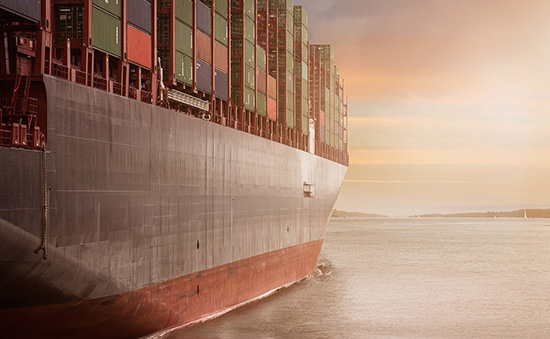International Sea Freight
When managing global supply chains, understanding the advantages of international sea freight is crucial for businesses seeking reliable and cost-effective logistics solutions.
What is Sea Freight?
Sea freight—also known as ocean freight—refers to the shipment of goods via ocean vessels across international waters. This method remains the most widely used mode of transport for international trade, with approximately 90% of global cargo moved through maritime routes. It is particularly suitable for transporting large volumes of goods over long distances at relatively low costs.
International Sea Freight: Connecting Global Markets
International Sea Freight is a critical component of global trade, facilitating the transportation of goods across international borders via maritime routes. It is an economical and efficient method for moving large volumes of cargo over long distances, playing a pivotal role in the supply chain of numerous industries.
Key Features of International Sea Freight:
1. Cost-Effectiveness: Sea freight is often the most cost-effective mode of transportation for heavy and bulky goods, especially when compared to air freight.
2. Capacity: Ships can carry a vast amount of cargo, making sea freight ideal for large-scale trade operations.
3. Reliability: With established shipping lanes and schedules, sea freight offers a reliable mode of transport for time-sensitive goods.
4. Versatility: Ships can transport a wide range of cargo, from containers to bulk goods, and even oversized items that other modes of transport cannot accommodate.
5. Environmental Considerations: Sea freight is considered more environmentally friendly compared to other modes of transport due to its lower carbon footprint per unit of cargo.
Types of Sea Freight Services:
1. Full Container Load (FCL): This service is used when a company has enough cargo to fill a shipping container on its own. It offers security and privacy as the container is sealed and dedicated to one client.
2. Less than Container Load (LCL): For smaller shipments, LCL is more suitable. Multiple parties' goods are consolidated into a single container, reducing costs.
3. Breakbulk Cargo: This type of cargo consists of items that are too large or heavy to be containerized, such as construction equipment or vehicles.
4. Roll-on/Roll-off (RoRo): Designed for cargo that can be wheeled or driven on and off the ship, such as cars, trucks, and even trains.
5. Bulk Cargo: Ships designed for the transport of loose materials like grains, coal, and ores.
Challenges and Considerations:
1. Lead Time: Sea freight can be slower than other modes of transport, which can impact delivery times and inventory management.
2. Weather and Route Conditions: Shipping routes can be affected by weather conditions, piracy, and geopolitical issues, which may require careful planning and risk assessment.
3. Regulations and Documentation: International shipping involves complex documentation and adherence to various international regulations, which can be a challenge for shippers.
4. Cargo Security: Ensuring the safety of cargo from theft and damage is a constant concern, especially for high-value goods.
The Role of Freight Forwarders:
Freight forwarders play a crucial role in managing international sea freight by coordinating the shipment process, handling documentation, and providing logistics solutions to ensure.
In conclusion, international sea freight is a vital link in the global supply chain, offering a cost-effective and reliable means of transporting goods across the world's oceans. As a freight forwarder, understanding the intricacies of sea freight is essential to providing efficient and effective services to clients in the international trade arena.
Why Choose MGD’s International Sea Freight Service?
-
High Capacity, Low Cost
Sea freight is the most cost-efficient solution for bulk shipments. Compared to air or land transport, ocean shipping offers greater capacity and lower freight rates, making it ideal for businesses focused on volume and budget. -
Reliable Global Routes
With access to major ports worldwide and longstanding partnerships with leading carriers, MGD ensures stable shipping schedules and flexible routing options. Our ocean freight network connects China with major trade destinations including the United States, Canada, the UK, Europe, Southeast Asia, Australia, South America, and more. -
Flexible Delivery Terms
Whether you require DDP (Delivered Duty Paid) or DDU (Delivered Duty Unpaid) shipping, we tailor our services to meet your specific import/export needs. We also offer FBA first-mile delivery, supporting e-commerce sellers in shipping goods directly to Amazon fulfillment centers. -
Integrated Customs & Logistics Support
MGD goes beyond basic port-to-port transportation. Our international sea freight services are integrated with customs clearance, warehousing, and last-mile delivery, ensuring a seamless shipping experience from origin to destination. -
Multimodal Options
For regions such as Russia and Europe, we offer advanced sea-rail intermodal solutions, combining maritime and overland transport to reduce transit time and improve cost-efficiency across the Eurasian corridor.
Regional Expertise, Global Coverage
From Guangzhou, Shenzhen, Ningbo, Qingdao, Shanghai and other key Chinese ports, our team coordinates shipments to a wide array of global markets—including Thailand, Indonesia, Singapore, Malaysia, and South America. Our localized knowledge and international reach ensure your cargo reaches its destination safely, on time, and with full transparency throughout the journey.
Ready to Optimize Your Global Shipping Strategy?
Choose Magdong Logistics for efficient, scalable, and customized international sea freight solutions. Contact our logistics specialists today to receive a tailored shipping quote and experience hassle-free global transportation.







Reviews
There are no reviews yet.